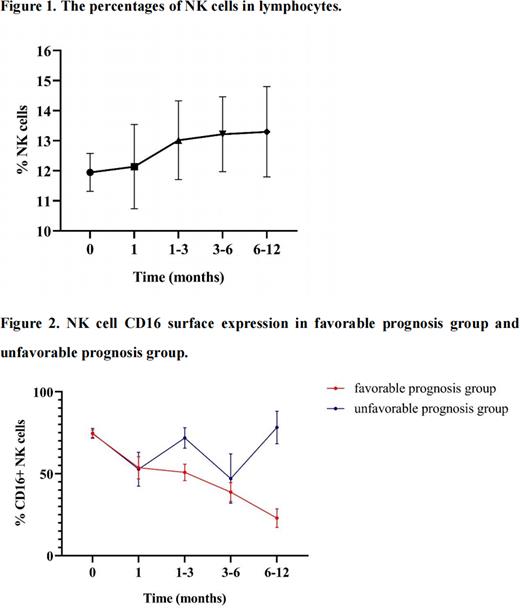Abstract
Introduction
Acute myeloid leukemia (AML) is a malignant hematological disease characterized by poor patient outcomes and limited chemotherapy options. The rapid advancement of immunotherapy has pushed natural killer (NK) cells into the spotlight. NK cells can eliminate tumor cells through CD16-mediated antibody-dependent cellular cytotoxicity (ADCC). Previous studies have found that downregulation of CD16 occurs after coculture with malignant targets, but the effects on ADCC by NK cells is less clear. Several studies have shown that blocking CD16 cleavage increases NK cell attachment to antibody-coated target cells, degranulation (Romee et al., 2013), whereas others, have reported that blocking CD16 cleavage either did not affect ADCC and limited their ability to kill in a sequential manner (Srpan et al., 2018). This uncertainty stems from a disparity between experimental methods in vitro. Therefore, understanding the clinical significance of downregulation of CD16 surface expression on NK cells is crucial.
Methods
Patients diagnosed with de novo AML between 2020 and 2022 were enrolled in the study. All patients were treated in accordance with NCCN Clinical Practice Guidelines in Oncology of AML (Version 3, 2020). Bone marrow samples were collected at month 0, month 1, months 1-3, months 3-6 and months 6-12 after therapy. Number of NK (CD3-CD56+) cells and their subsets (CD16+ and CD16-) were analyzed by flow cytometry. Based on the 12-month prognosis, the patients were assigned to favorable prognosis group (complete response and survival) or unfavorable prognosis group (relapse or death).
Results
Totally 188 AML patients (108 males, 80 females) with a mean age of 45.5±17.9 years in this study. At month 0, month 1, months 1-3, months 3-6 and months 6-12, the mean percentage of NK cells in the bone marrow were 11.95%±0.63%,12.14%±1.40%,13.02%±1.31%,13.22%±1.25,13.30%±1.50%, respectively. There was a trend towards increased, but it was not statistically significant (P=0.12, Fig.1).
There were 122 patients in the favorable prognosis group and 66 patients in the unfavorable prognosis group. The mean percentage of NK cells expressing CD16 in the bone marrow between the two groups were 74.44%±2.26% vs 74.70±2.98% at month 0 (P=0.94), 53.70±6.80% vs 52.77±10.33% at month 1 (P=0.94), 50.85±5.04% vs 71.85±6.21% at months 1-3 (P<0.01), 38.78±5.74% vs 47.05±15.05% at months 3-6 (P=0.59), and 22.94±5.70% vs 78.28±9.92% at months 6-12 (P<0.01). The level of CD16 surface expression on NK cells in the favorable prognosis group showed gradually trend of decrease (P=0.02), while it increased at months 1-3 and months 6-12 in the unfavorable prognosis group (P<0.01). The two significant peaks correspond to adverse event.
Conclusions
CD16 surface expression on NK cells was down-regulated in AML patients, and was markedly related to a favorable prognosis. It is similar to the previous conclusion of Srpan et al. These results indicate that CD16 may be used as a potential biomarker to predict prognosis for AML patients. Future studies will explore the visibility of other tumor, and shed new light on the development of immunological therapy for tumors.
Disclosures
No relevant conflicts of interest to declare.
Author notes
Asterisk with author names denotes non-ASH members.


This feature is available to Subscribers Only
Sign In or Create an Account Close Modal